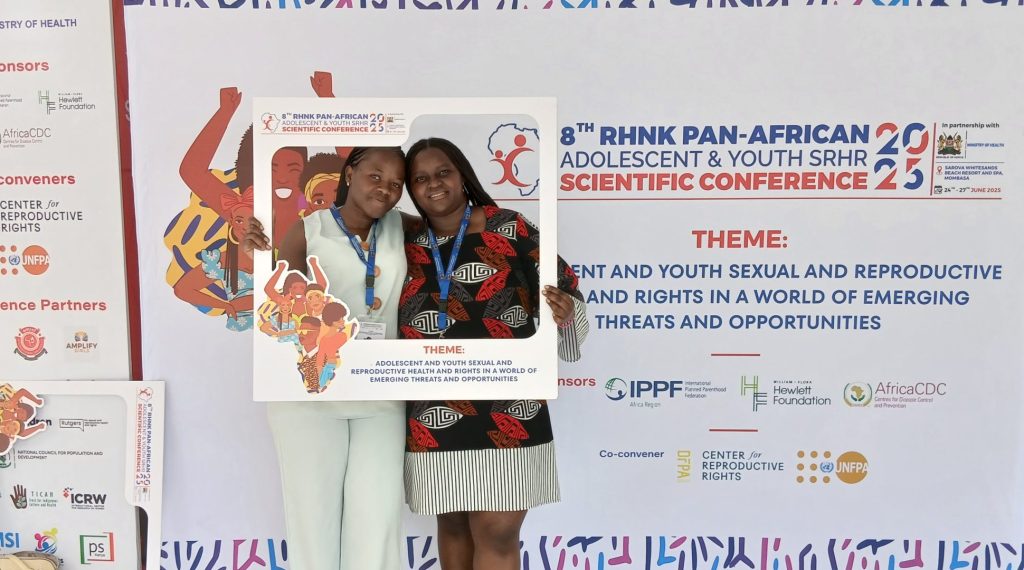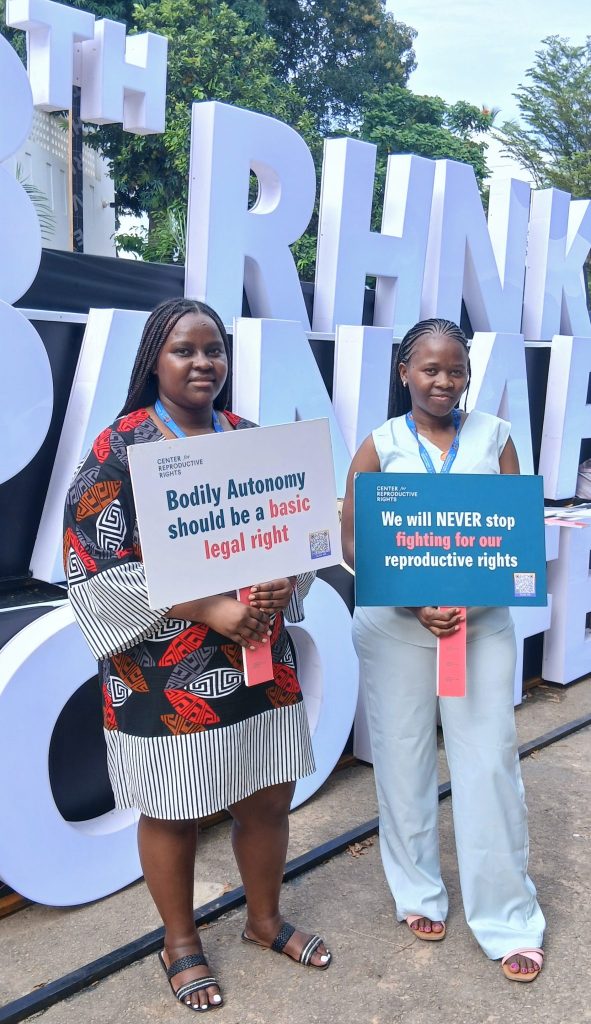Reproductive Health Network Kenya (RHNK) Conference: placing youth at the heart of SRHR issues
 09 July 2025
09 July 2025

From 24-27 June, the 8th Reproductive Health Network Kenya (RHNK) Adolescents and Youth Conference took place in Mombasa, Kenya. In this blog, Make Way youth representatives Elizabeth Warindi and Vilda Atieno share their main takeaways from the conference. "Representation matters: it is important to have young people in the room when having conversations about access to reproductive health."
What is the Reproductive Health Network Kenya (RHNK) for Adolescents and Youth Sexual and Reproductive Health and Rights Conference?
Warindi
The Reproductive Health Network Kenya (RHNK) for Adolescents and Youth Sexual and Reproductive Health and Rights (SRHR) Conference is a pan-African gathering of SRHR advocates, civil society organizations, and the government via the Ministry of Health to discuss advocacy strategies to advance SRHR for all. It is also a very key space for young people like ourselves to write, and present abstracts to show the work that we are doing, and to also hear and learn from others.
Vilda
The RHNK Conference is a yearly event held in June that brings together various advocates and stakeholders in SRHR. It serves as a platform for active sharing and learning, with young people placed at the heart of every discussion on reproductive health issues.
What is the link to young people and SRHR at the conference?
Warindi
The conference aims to advance SRHR for young people and adolescents. It is a space that provides an opportunity for young people and professionals who program for young people to learn and share their knowledge, and interventions in SRHR, gender justice, and disability justice. At the 8th RHNK Conference that just wrapped, young people were represented well. Most of the abstract presentations were by young people leading innovations around SRHR. In addition to this being a space for learning, it is also a space for networking with others in the same field. This past week, in side events, abstract presentations, plenaries, and also walking in the streets, I have reconnected with colleagues from the Make Way Programme, and from other consortia, and formed meaningful networks that have re-energized me in my advocacy work.
Vilda
There is also the presentation of the Youth Communiqué, an advocacy tool that helps inform the agenda for the next conference. Young people have the opportunity to share a wide range of ideas through abstracts, side events, and informal conversations at the Youth Café.
What is the importance of having youth representation at the summit?
Warindi
Representation matters: it is important to have young people in the room when having conversations about access to reproductive health. Young people are often brushed off as being inexperienced or untested in most aspects of society, where most decisions are made by others. This exclusion of youth from such key conversations can lead to the creation of programmes that are not meaningful. It is therefore important to give young people a seat at the table.
Vilda
In the fight to achieve intersectional SRHR services for all, young people, in their diverse and intersecting identities, hold the solutions to their own issues and should therefore be given opportunities. Young people also come as a package, bringing with them innovations and ideas. This underscores the importance of meaningfully engaging young people in matters that affect them.

From left to right: Make Way youth representatives Elizabeth Warindi and Vilda Atieno standing and holding two signs. Warindi’s sign says: ‘Bodily autonomy should be a basic legal right’, and Vilda’s sign says: ‘We will never stop fighting for our reproductive rights.’
Can you tell a bit about your role at the conference?
Warindi
Barbara Ndolo, Bertha, Vilda, and I co-authored an abstract for the conference titled ‘Leveraging Safe Spaces to Enable Supported Decision-Making as a Pathway to Bodily Autonomy for Girls and Young Women with Disabilities’, which Barbara presented at the conference. In addition to co-authoring the abstract, I also went to the conference to learn and to recharge.
Vilda
Cascading the Make Way tool for intersectionality and Make Way Programme was also part of the role, and while touring the different booths, I also got a chance to share what we do and what the programme means to us.
What role, if any, does intersectionality have at the summit?
Vilda
Intersectionality is a key element at the summit, as it brings a unique perspective of appreciating who we are in our diverse identities. The conference was filled with young people sharing their unique experiences: experiences that are better understood and valued when viewed through the lens of intersectionality. In one of the sessions co-hosted by the Young Women Leadership Institute, which focused largely on self-care, the discussion centered on appreciating our diverse experiences, further reinforcing the importance of advocating for intersectionality.
In short, what did you learn, and what was your overall experience?
Warindi
I came away from the conference with a lot of learnings. Some of the key and interesting conversations, for instance, was a side event that was arranged by Akina Mama wa Afrika and the Transform SRHR project titled ‘Navigating Threats and Opportunities to Realize the Africa We Want’, where we discussed the growing well-funded and well-networked opposition to SRHR work. This was a great session on opposition monitoring, and it reminded me that we must stay vigilant as we advocate for SRHR.
Vilda
The conference was rich with knowledge. Some of the key takeaways for me include the importance of health financing, something that came out clearly during a number of sessions. I also got the reaffirmation on the importance of trusting young people in their different diversities.
You can also watch this video, in which Warindi and Vilda briefly talk about their main takeaways from the conference.
Is there any other information that you would like to share?
As we look for the change we want, it’s important to trust and give young people opportunities.



